REBEL-Quad is an advanced AI SoC built on a UCIe-Advanced chiplet architecture, designed to meet the extreme compute and memory demands of serving frontier LLMs at massive scale for hyperscalers, AI data centers, and enterprises.
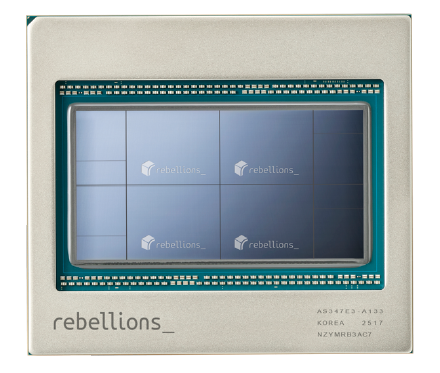
It features a unified hardware-software stack that maximizes utilization and delivers exceptional performance-per-watt across both compute-bound prefill and memory-bound decoding phases. The chiplet-based design enables hyper scalability without compromising latency or coherence.
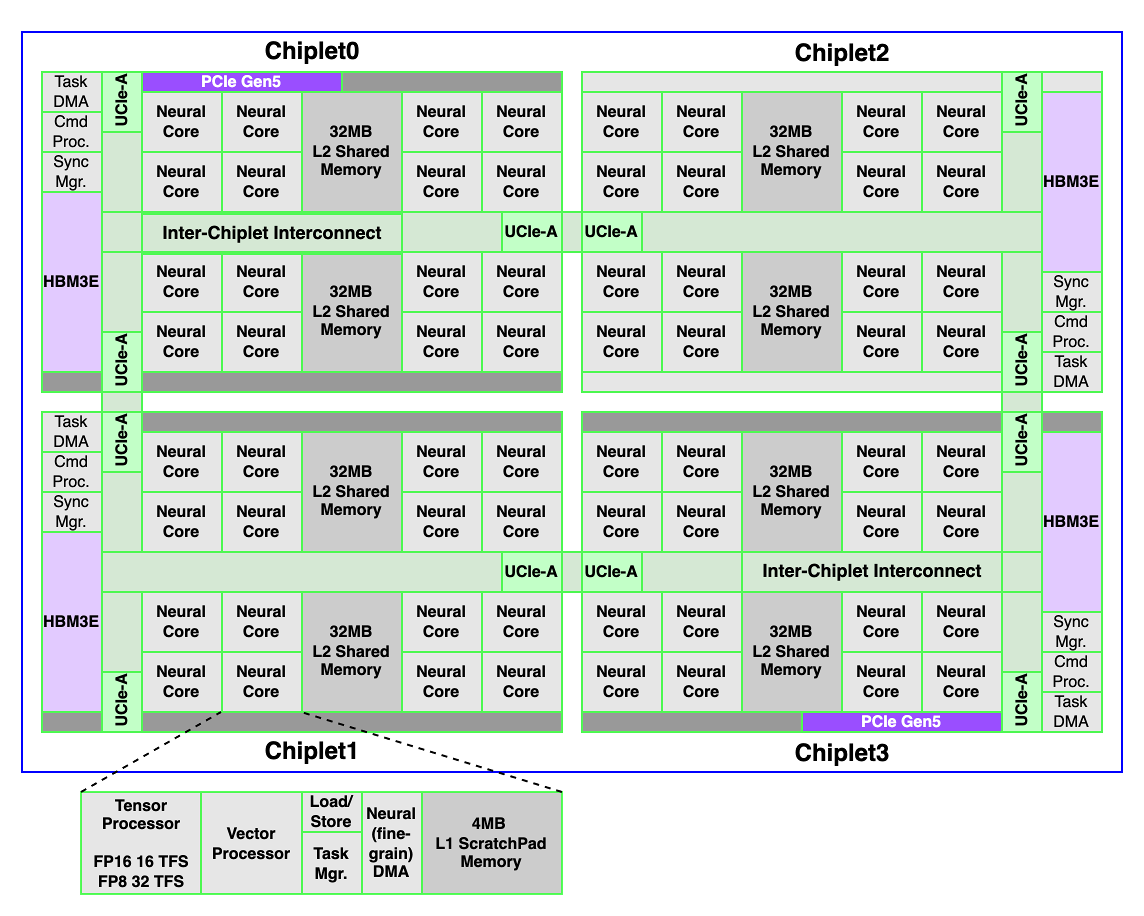
Solving Challenges of LLM
REBEL-Quad introduces architectural solutions designed for energy-efficient AI inference at massive scale.
Unified Mixed Precision Compute Engine
Combines FP8/FP16/FP32 arithmetic in a single core, boosting compute density by 2.8×.
Predictive DMA & On-Chip Mesh
2.7 TB/s effective bandwidth with software-tuned DMA, backed by a 3.3× faster mesh fabric.
REBEL-Quad’s exceptional performance-per-watt, starts from its proprietary IP cores. A high-bandwidth on-chip mesh interconnect ensures seamless communication across all cores.
Holistic Synchronization
Hardware-accelerated peer-to-peer and hierarchical communication enabling seamless distributed execution.
Custom Die-to-Die Protocol
1 TB/s per channel with 11ns inter-chiplet latency, while preserving modularity and enabling various chiplet expansions.
The software stack is tightly coupled to the underlying hardware to enable frictionless scalability to serve frontier models. Backed by a custom die-to-die protocol, REBEL-Quad reliably supports the massive inference demands for hyperscalers and AI data centers.
Unified Mixed Precision Compute with Chiplet-Scale Scalability
Traditional NPUs rely on separate arithmetic blocks for different precision formats (e.g., FP8, FP16, BF16), leading to inefficiencies in both area and dataflow scheduling. REBEL-Quad introduces a unified arithmetic engine supporting per-operand configurable precision, eliminating the need for separate functional units.
This design enables:
- 2.8× higher compute density compared to legacy implementations
- Reduced instruction dependency via hardware-managed wide-issue execution
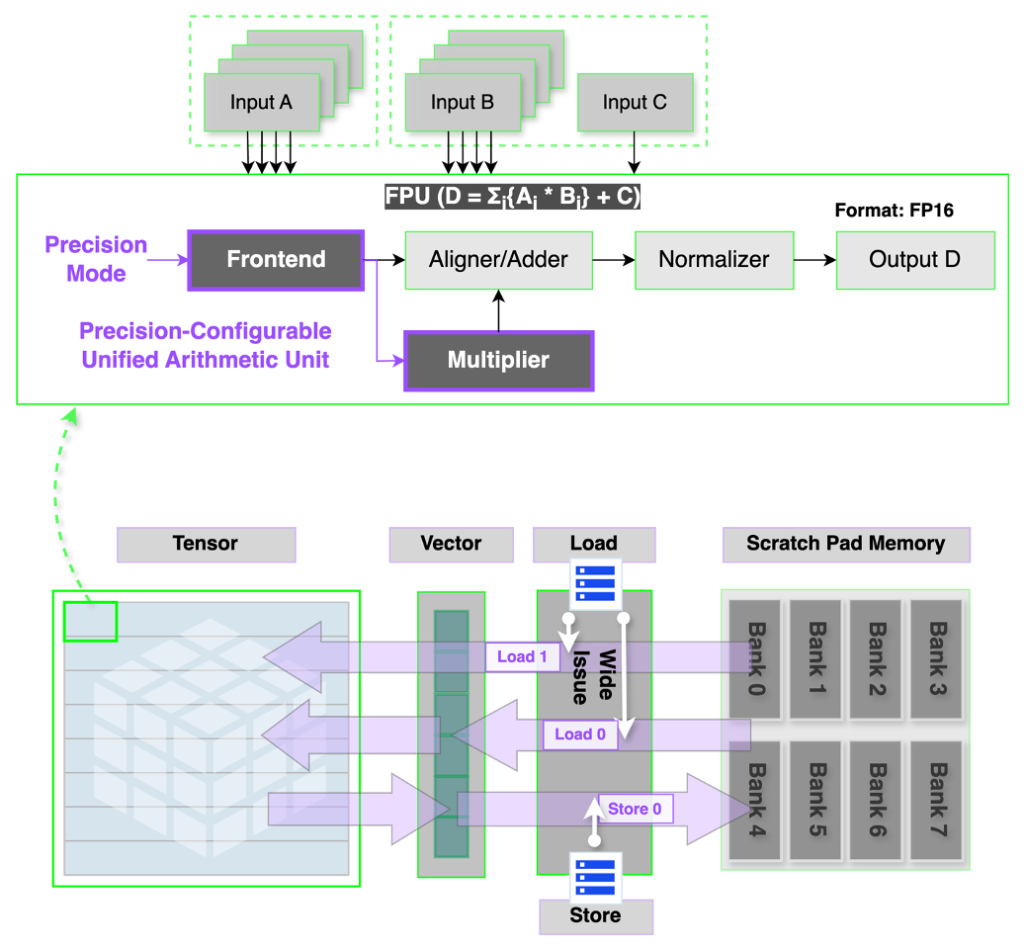
The wide-issue mechanism balances memory bandwidth across tensor and vector cores, ensuring simultaneous access to registers and scratchpad memory. These improvements are particularly beneficial in compute-heavy stages of LLM inference, where sustained FP8 throughput is essential. REBEL-Quad achieves 2 PFLOPS (FP8) compute within a single-node four-chiplet package, significantly enhancing performance-per-watt.
Predictive DMA and High-Bandwidth Memory Access
In the decoding phase, token-by-token generation is limited by KV cache memory bandwidth, which scales poorly with longer context windows. To mitigate this, REBEL-Quad implements a predictive, software-configurable DMA engine capable of:
- 2.7 TB/s effective memory bandwidth
- Simultaneous local and remote HBM access
- Multi-path routing for bandwidth interleaving
This DMA is tightly integrated with REBEL-Quad’s custom on-chip mesh interconnect, providing 3.3× higher per-core bandwidth over previous architectures. The DMA engine also supports per-task QoS, minimizing latency spikes and dependency stalls across long-tail workloads.
Hierarchical Synchronization and Peer Communication
To sustain performance across distributed workloads, especially in models with complex attention patterns and long-range dependencies, REBEL-Quad employs a full-chip synchronization and communication mechanism.
Key mechanisms include:
- A dedicated virtual channel for control signals across the mesh network
- A centralized synchronization manager that orchestrates execution flow
- Hardware-accelerated peer-to-peer communication between cores, DMAs, and synchronization units
The hierarchical communication protocol supports both fine-grained intra-chiplet coordination and scalable inter-chiplet dependency resolution, ensuring maximum utilization across all neural cores during concurrent prefill and decoding. This architecture avoids traditional synchronization bottlenecks and minimizes software overhead, enabling compute-dense execution, high utilization rate, and consequently, maximum performance-per-watt.
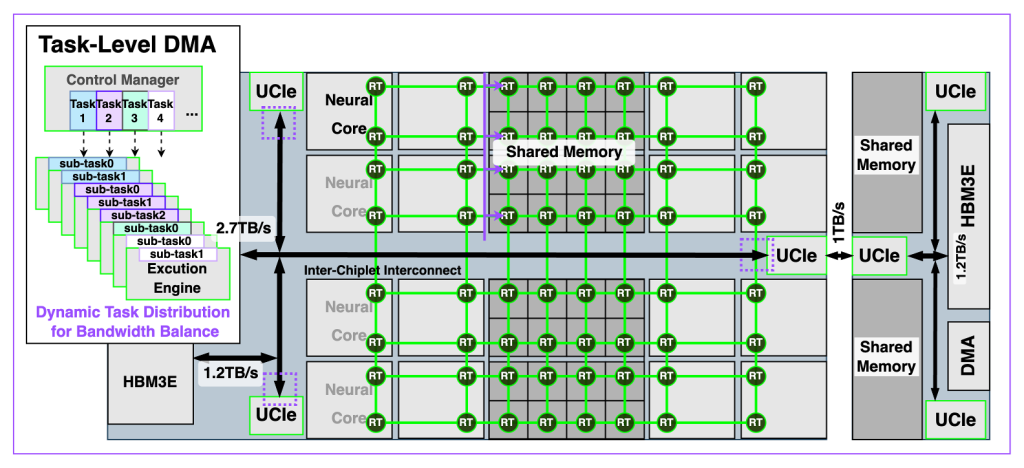
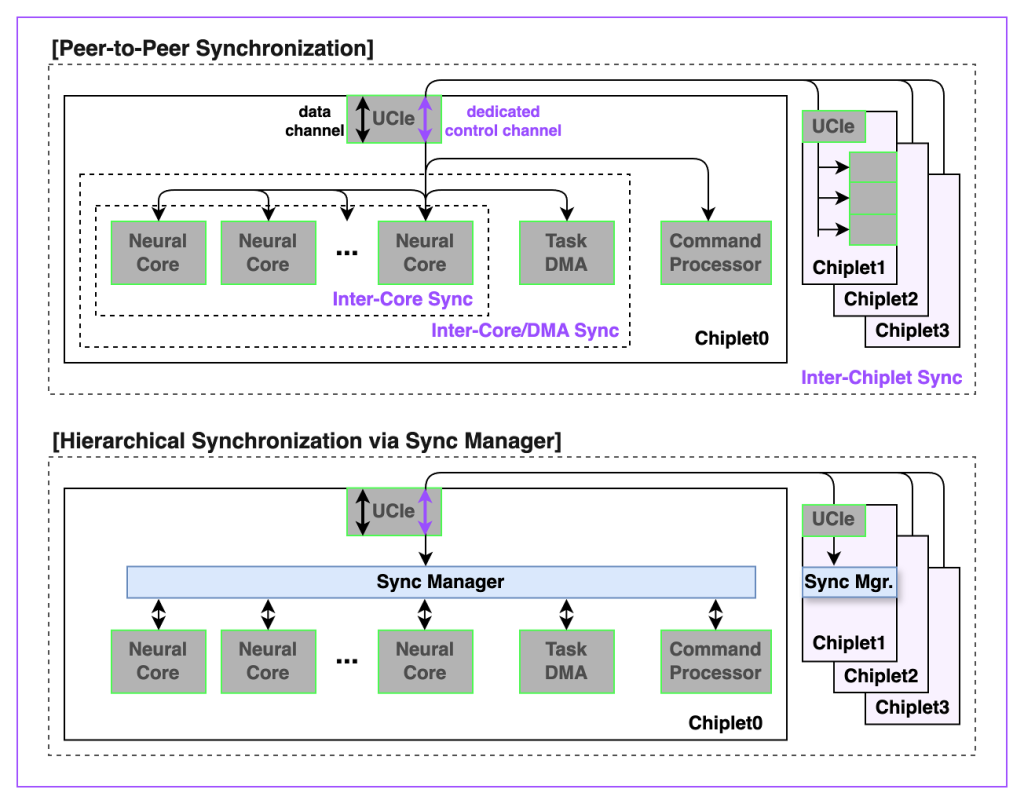
Scalable Die-to-Die Protocol for Modular Expansion
REBEL-Quad’s modular design is enabled by a custom die-to-die protocol based on UCIe-Advanced, offering:
- 1 TB/s bi-directional per-channel throughput and 11ns full-path inter-chiplet latency
- Load-store memory semantics across dies
- Future-proofed via flexible scale-up and scale-out
This interconnect transforms the multi-chip system into a virtually monolithic unit, while preserving modular scalability for future system expansion. Each chiplet communicates via three UCIe channels, with topology-aware die rotation ensuring horizontal mesh continuity. The protocol is paired with a robust switch network and real-time debug mechanisms to support high-reliability, error-free operation, essential for supporting massive AI serving demands of frontier models, especially for hyperscalers, AI data centers, and enterprises. Future extensibility is planned through I/O and memory expander chiplets, enabling even broader system configurations with minimal redesign.
REBEL-Quad delivers the performance, efficiency, and scalability needed to serve next-generation LLMs—without compromise. Its chiplet-based design enables modular upgrades and long-term adaptability, making it an ideal foundation for enterprise-scale AI systems.

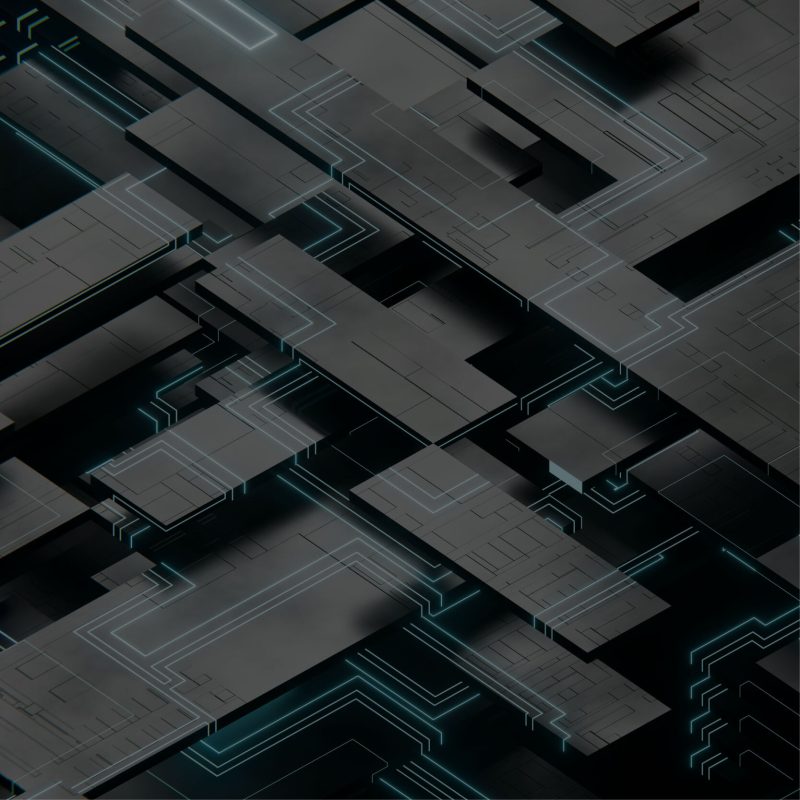



Share This: